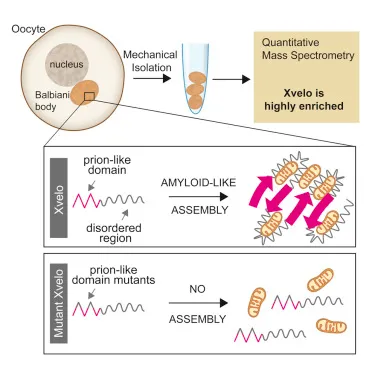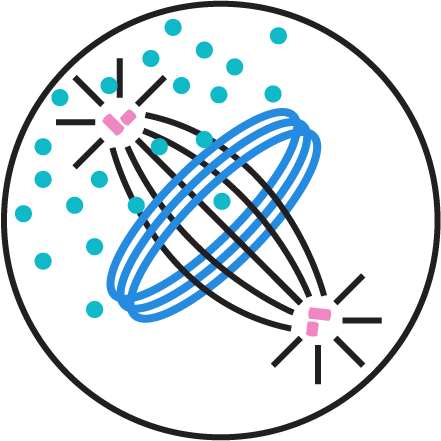New work from a collaboration between the Mitchison lab and our institute is out now in the journal Cell. Elvan Boke and colleagues propose that the Balbiani body, a non-membrane-bound compartment in vertebrate oocytes, is formed by amyloid-like assembly of proteins containing prion-like domains. The Balbiani body contains RNA, mitochondria, and other organelles needed by the early embryo after fertilization. The amyloid-like assembly of prion-like proteins in the Balbiani body (such as Xvelo in Xenopus) may form a protective compartment to help oocytes function as long-lived germ cells. The authors show that Xvelo forms a stable matrix with amyloid-like properties both in vivo and in vitro and that the association of Xvelo with the Balbiani body is dependent on Xvelo’s prion-like domain.
See the graphical abstract below and read the full paper here: Boke et al, Cell 2016.
Congratulations to Elvan, our postdoc Martine Ruer, and the whole team!

Graphical abstract for Boke et al, Cell 2016.
Boke E, Ruer M, Wühr M, Coughlin M, Lemaitre R, Gygi SP, Alberti S, Drechsel D, Hyman AA, Mitchison T. Amyloid-like self-assembly of a cellular compartment. 2016, Cell 166, 637-650.
